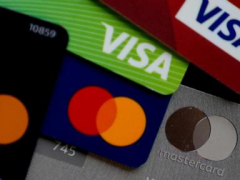NEW YORK — The Federal Reserve cut its benchmark interest rate by a quarter point Wednesday for the second time since September. Before that, it had gone nine months without a cut.
The federal funds rate is the rate at which banks borrow and lend to one another. While the rates consumers pay to borrow money aren’t directly linked to this rate, shifts affect what you pay for credit cards, auto loans, mortgages, and other financial products.
“While the full economic impact of such a move will unfold over time, early indicators suggest that even modest rate cuts can have meaningful consequences for consumer behavior and financial health,” said Michele Raneri, vice president and head of U.S. research at credit reporting agency TransUnion.
The Fed has two goals when it sets the rate: one, to manage prices for goods and services, and two, to encourage full employment. Typically, the Fed might increase the rate to try to bring down inflation and decrease it to encourage faster economic growth and increase hiring. The challenge now is that inflation is higher than the Fed’s 2% target but the job market has been weak. The government shutdown has also prevented the collection and release of data the Fed relies on to monitor the health of the economy.
Still, the Fed has projected it will cut rates once more before the end of the year.
Here’s what to know:
For savers, falling interest rates will slowly erode attractive yields currently on offer with certificates of deposit (CDs) and high-yield savings accounts.
Three of the top five high yield savings accounts had rate cuts after the last Fed rate cut in September, according to Ken Tumin, founder of DepositAccounts.com, while two of the big five banks (Ally and Discover/Capital One) cut their savings account rates. The top rates for high yield savings account right now remain around 4.46% to 4.6%.
Those are still better than the trends of recent years, and a good option for consumers who want to earn a return on money they may want to access in the near-term. A high yield savings account generally has a much higher annual percentage yield than a traditional savings account. The national average for traditio





